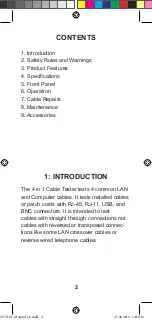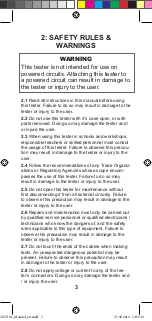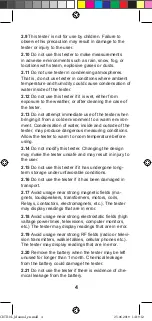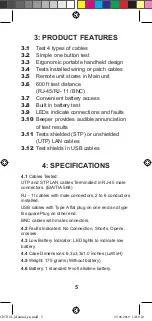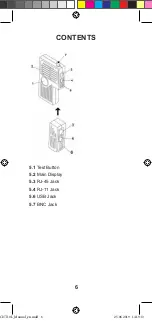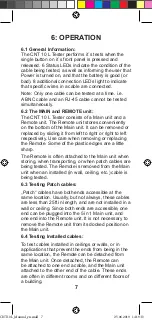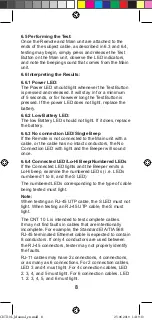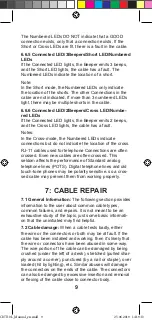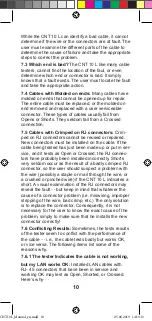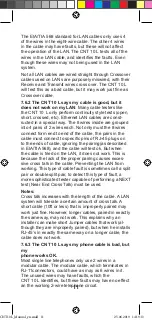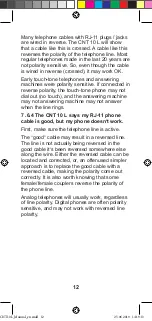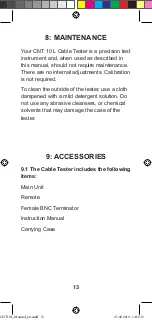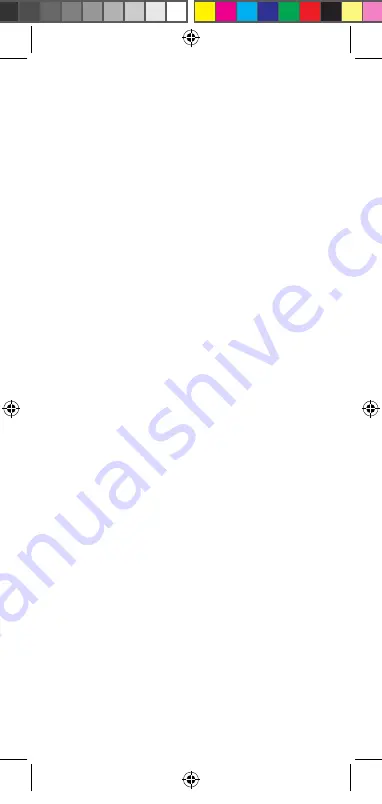
4
2.9
This tester is not for use by children. Failure to
observe this precaution may result in damage to the
tester or injury to the user.
2.10
Do not use this tester to make measurements
in adverse environments such as rain, snow, fog, or
locations with steam, explosive gases or dusts.
2.11
Do not use tester in condensing atmospheres.
That is, do not use tester in conditions where ambient
temperature and humidity could cause condensation of
water inside of the tester.
2.12
Do not use this tester if it is wet, either from
exposure to the weather, or after cleaning the case of
the tester.
2.13
Do not attempt immediate use of the tester when
bringing it from a cold environment to a warm environ-
ment. Condensation of water, inside and outside of the
tester, may produce dangerous measuring conditions.
Allow the tester to warm to room temperature before
using.
2.14
Do not modify this tester. Changing the design
may make the tester unsafe and may result in injury to
the user.
2.15
Do not use this tester if it has undergone long-
term storage under unfavorable conditions.
2.16
Do not use the tester if it has been damaged in
transport.
2.17
Avoid usage near strong magnetic fields (ma-
gnets, loudspeakers, transformers, motors, coils,
Relays, contactors, electromagnets, etc.). The tester
may display readings that are in error.
2.18
Avoid usage near strong electrostatic fields (high
valtage power lines, televisions, computer monitors,
etc.) The tester may display readings that are in error.
2.19
Avoid usage near strong RF fields (radio or televi-
sion transmitters, walkie talkies, cellular phones etc.).
The tester may display readings that are in error.
2.20
Remove the battery when the tester may be left
unused for Ionger than 1 month. Chemical leakage
from the battery could damage the tester.
2.21
Do not use the tester if there is evidence of che-
mical leakage from the battery.
CNT10L_Manual_en.indd 4
25.06.2019 14:19:12


